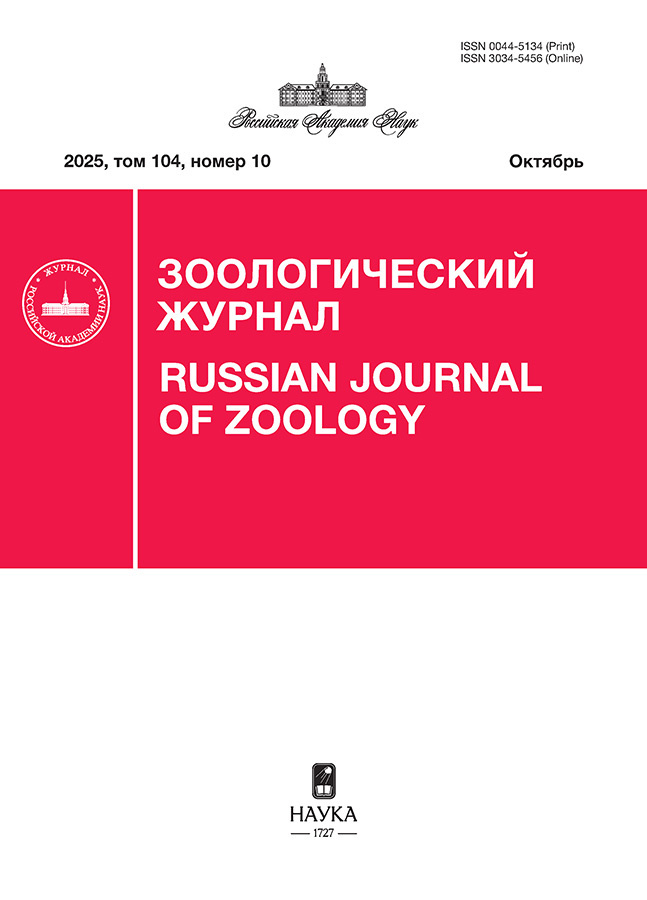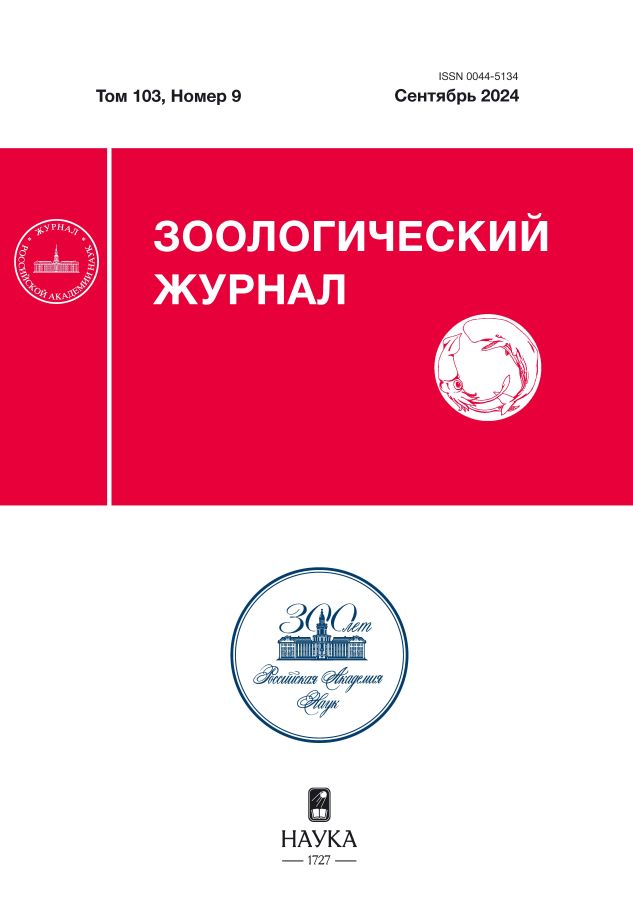Comparative microanatomy of the guard hairs in the Late Pleistocene wolf (Canis lupus ssp.) from the Late Quaternary deposits of Yakutia, based on SEM observations
- Authors: Chernova O.F.1, Klimovsky A.I.2, Protopopov A.V.2,3
-
Affiliations:
- A.N. Severtsov Institute of Ecology and Evolution, Russian Academy of Sciences
- Academy of Sciences of the Republic of Sakha (Yakutia)
- M.K. Ammosov North-Eastern Federal University
- Issue: Vol 103, No 9 (2024)
- Pages: 83-102
- Section: ARTICLES
- URL: https://rjdentistry.com/0044-5134/article/view/654250
- DOI: https://doi.org/10.31857/S0044513424090078
- EDN: https://elibrary.ru/trkrnl
- ID: 654250
Cite item
Abstract
Using scanning electron microscopy, a comparative morphological analysis of the fine structure of the guard hairs in the mummy of an adult male ancient wolf (Canis lupus ssp.) with an age of 45504 ± 150 BP, found in the late Pleistocene deposits in Yakutia, was carried out. Guard hairs selected for maximum thickness (guard I) vary significantly in different areas of the wolf’s skin in profile and metric data, and the vibrissae show a special medullary structure. The fine structure of the cellular medulla of the hair in the ancient wolf is shown to be similar to that of extant representatives of Caninae, such as the jackal (C. aureus), maned (Chrysocyon brachyurus) and red wolves (Cuon alpinus), some breeds of domestic dogs (Canis familiaris) (Akita Inu, Basset, Dalmatian, Irish Terrier, Miniature Schnauzer, Russian Greyhound, Hortaya Greyhound), and African fox (Vulpes pallida). In these species, the disordered (lacey or spongy) medulla of the thickest part of the hair shaft (“shield”) differs from the ordered (cellular, with regularly located large cavities) medulla of the fox (V. vulpes), gray (V. ferrilata) and Tibetan foxes (Urocyon cinereoargenteus), arctic fox (Alopex lagopus), corsac fox (Vulpes corsac), American corsac fox (V. velox). By this feature, it is possible to distinguish the hair of wolves and foxes, if we compare the medial part of the hair, since at the base of the hair a cellular medulla is found in some breeds of dogs (Akita Inu, Mastino Napoletano, Miniature Schnauzer, Hortai Greyhound) and corsac fox. The cuticle pattern greatly varies along the guard hair shaft, which is typical of wolves and foxes. This is especially specific in the area of the shaft in front of its thickened part, as it consists of lanceolate or diamond petal scales extended along the hair. The cuticle pattern formed by lance-shaped or diamond petal scales is quite similar in ancient and extant wolves, arctic foxes and African foxes. Yet the cuticle of the hair of many other species differs from that of wolves. Thus, such a feature as the presence of lanceolate or diamond petal cuticle on the hair is of limited importance for distinguishing between the species. We have shown that the hair of an ancient wolf in its fine structure (the thickness of the shaft, the degree of development of the medulla and its microanatomy, the cuticle pattern and its variability along the guard hair shaft) is practically not different from that of recent wolves, this confirming that the wolf as a species had already been fully formed in the Pleistocene. The fine structure of wolf hair differs from that of foxes, but has features similar to the hair of the jackal and domestic dog, this confirming the phylogenetic connections with the latter two genera.
Keywords
Full Text
About the authors
O. F. Chernova
A.N. Severtsov Institute of Ecology and Evolution, Russian Academy of Sciences
Author for correspondence.
Email: olga.chernova.moscow@gmail.com
Russian Federation, Moscow, 119071
A. I. Klimovsky
Academy of Sciences of the Republic of Sakha (Yakutia)
Email: aisen87@mail.ru
Russian Federation, Yakutsk, 677000
A. V. Protopopov
Academy of Sciences of the Republic of Sakha (Yakutia); M.K. Ammosov North-Eastern Federal University
Email: a.protopopov@mail.ru
Russian Federation, Yakutsk, 677000; Yakutsk, 677000
References
- Боескоров Г. Г., Барышников Г. Ф., 2013. Позднечетвертичные хищные млекопитающие Якутии. М.: Наука. 210 c.
- Волк (Происхождение, систематика, морфология, экология), 1985. Д. И. Бибиков, ред. М.: Наука. 606 с.
- Головин А. В., 2001. Особенности строение сердцевинных клеток остевых волос Волчьих (Canidae, Carnivora) // Проблемы эволюционной и экологической морфологии. М.: Биоинформсервис. С. 62–74.
- Замахаева И. М., 1979. Об изменчивости волосяного покрова волка // Экология. № 3. С. 99–101.
- Климовский А. И., Колесов С. В., 2022. Новые находки волка (Canis lupus L. 1758) в позднеплейстоценовых отложениях Колымо-Индигирской низменности // Природные ресурсы Арктики и Субарктики. Т. 27. № 4. С. 592–599.
- Лазарев П. А., 2005. Крупные млекопитающие антропогена Якутии (филогенез, систематика, палеоэкология, фаунистические комплексы, тафономия, останки). Дис. … докт. биол. наук. Якутск: Институт прикладной экологии Севера Академии наук Республики Саха (Якутия). 317 с.
- Огнев С. И., 1947. Звери СССР и прилежащих стран. Т. 5. М.-Л.: Издательство АН СССР. 809 с.
- Плотников В. В., Протопопов А. В., Наоки Сузуки, Дален Люве, 2022. Ископаемый волк (Сanis sp.) из среднего течения реки Индигирка, верхний плейстоцен Якутии // Зоологический журнал. T. 101. № 6. С. 693–702.
- Соколов В. Е., 1973. Кожный покров млекопитающих. М.: Наука. 487 с.
- Соколов В. Е., Скурат Л. Н., Степанова Л. В., Шабадаш С. А., 1988. Руководство по изучению кожного покрова млекопитающих. М.: Наука. 279 с.
- Церевитинов Б. Ф., 1951. Дифференцировка волосяного покрова пушных зверей // Вопросы товароведения пушно-мехового сырья. Труды Всесоюзного научно-исследовательского института охотничьего промысла. Вып. 10. С. 6–17.
- Чернова О. Ф., Целикова Т. Н., 2004. Атлас волос млекопитающих (Тонкая структура остевых волос и игл в сканирующем электронном микроскопе). М.: Товарищество научных изданий КМК. 429 с.
- Чернова О. Ф., Перфилова Т. В., Жукова Ф. А. и др., 2011. Атлас микроструктуры волос млекопитающих – объектов судебной экспертизы. М.: Российский Федеральный Центр Судебной Экспертизы. 286 с.
- Чернова О. Ф., Перфилова Т. В., Киладзе А. Б. и др., 2019. Атлас микроструктуры волос редких видов млекопитающих, занесенных в красную книгу Российской Федерации. М.: Российский Федеральный Центр Судебной Экспертизы. 186 с.
- Abràmoff M. D., Magalhães P. J., Ram S. J., 2004. Image processing with ImageJ // Biophotonics International. V. 11. № 7. P. 36–42.
- Ahl A. S., 1986. The role of vibrissae in behavior: status review // Veterinary Research Communications. V. 10. № 4. P. 245–268.
- Arpacık A., 2021. Microanatomical observations of hair characteristics of Red Fox (Vulpes vulpes), Golden Jackal (Canis aureus), and Gray Wolf (Canis lupus): A comparative study // Pakistan Journal of Zoology. V. 53. № 6. P. 2247–2254.
- Belli H. M., Yang A. E.T., Bresee Ch.S., Hartmann M. J.Z., 2017. Variation in vibrissal geometry across the rat mystacial pad: base diameter, medulla, and taper // Journal of Neurophysiology. V. 117. № 4. P. 1807–1820.
- Belli H. M., Bresee Ch.S., Graff M. M., Hartmann M. J.Z., 2018. Quantifying the three-dimensional facial morphology of the laboratory rat with a focus on the vibrissae // PLoS One. V. 13. № 4. e0194981.
- Boeskorov G. G., Сheprasov M.Yu., Pavlova M. R., Chernova O. F., Novgorodov G. P., Schelkova M. V., Nikolaev A. N., 2023. On the morphology and ecology of the fossil Don Hare (Lepus tanaiticus Gureev, 1964) // Paleontological Journal. V. 57. Suppl. 1. P. S95–S111.
- Breese C. S., Belli H. M., Luo Y., Hartmann M. J.Z., 2023. Comparative morphology of the whiskers and faces of mouse and rat (Mus musculus and Rattus norvegicus) // Journal of Experimental Biology. V. 226. № 19: jeb.245597.
- Chakraborty R., De J. K., 2010. Atlas on hairs of Indian mammals. Part I: Carnivora. Published by the Division by the Director, Zoological Survey of India, Kolkata. P. 1–144.
- Chernova O. F., Kulikov V. F., 2011. Structural differences between the shafts of mammalian vibrissae and hairs and their causes // Doklady Biological Sciences. V. 438. P. 182–185.
- Chernova O. F., Kirillova I. V., 2013. Hair microstructure of the late quaternary bison from north-east Russia // Proceedings of the Zoological Institute RAS (Proceedings Zin). V. 317. № 2. P. 202–216.
- Chernova O. F., Boeskorov G. G., Protopopov A. V., 2015. Identification of the hair of a Holocene “Yukagir horse” (Equus spp.) mummy // Doklady Biological Sciences. V. 462. P. 141–143.
- Chernova O. F., Kirillova I. V., Boeskorov G. G. et al., 2015a. Architectonics of the hairs of woolly mammoth and woolly rhino // Proceedings of the Zoological Institute RAS. V. 319. № 3. P. 441–460.
- Chernova O. F., Vasyukov D. D., Savinetsky A. B., 2019. Identification of fossil mammal fur from ancient Eskimo settlements of Chukotka // Зоологический журнал. Т. 98. № 10. С. 1186–1202.
- Chernova O. F., Protopopov A. V., Boeskorov G. G., Pavlov I. S., Plotnikov V. V., Suzuki N., 2020. First description of the fur of two cubs of fossil Cave Lion Panthera spelaea (Goldfuss, 1810) found in Yakutia in 2017 and 2018 // Doklady Biological Sciences. V. 492. № 1. P. 93–98.
- Chernova O. F., Boeskorov G. G., 2023. Structure of the hair of the Don hare Lepus tanaiticus (Leporidae, Lagomorpha) first found in Pleistocene deposits in Yakutia, Russia // Biological Bulletin. V. 50. № 9. P. 2471– 2491.
- Chernova O. F., Zherebtsova O. V., 2023. Architecture of vibrissae in eight rodent species of Ctenohystrica (Rodentia): A comparative SEM study // Zoologischer Anzeiger – A journal of comparative zoology. V. 307. P. 54–69.
- Gharu J., Trevedi S., 2016. Ancient hairs: need for morphological analysis of Prehistoric and extant mammals // Vertebrate Zoology. V. 66. № 2. P. 221–224.
- Gilbert M. T.P., Tomsho L. P., Rendulic S. et al., 2007. Whole-genome shotgun sequencing of mitochondria from ancient hair shafts // Science. V. 317. P. 1927– 1930.
- Keller A., 1981. Détermination des mammafires de la Suisse par leur pelage: V. Carnivora, VI. Artiodactyla // Revue suisse de Zoologie. T. 88. Fasc. 3. P. 803– 820.
- Keller A., 1984. Etude sur la structure fine des jarres doesaux de quelques Canides sauvages et domestiquesa de genre Canis (Mammalia: Canidae) // Revue suisse de Zoologie. T. 91. Fasc. 4. P. 973–992.
- Kennedy A. J., 1982. Distiquishing characteristics if the hairs of wild and domestic canids from Alberta // Canadian Journal of Zoology. V. 60. P. 536–541.
- Kirillova I. V., Plicht J. V.D., Gubin S. V. et al., 2016. Taphonomic phenomenon of ancient hair from Glacial Beringia: perspectives for palaeoecological reconstructions // An International Journal of Quaternary Research, Boreas. 10.1111/bor.12162; ISSN0300-9483.
- Kirillova I. V., Zanina O. G., Chernova O. F. et al., 2015. Ancient bison from the Rauchua River mouth (Chukotka, Russia) // Journal of Quaternary Research. V. 84. P. 232–245.
- Moore J. D., Spence L. E., Dugnolle C. E., 1974. Identification of the dorsal guard hairs of some mammals of Wyoming. W. G. Hepworth, ed. // Wyoming Game and Fish Department Commission Bulletin. Cheyeene. № 14. 77 p.
- Novacek M. J., 1997. Mammalian evolution: an early record bristling with evidence // Current Biology. V. 7. № 8. P. 489–491.
- Plotnikov V. V., Protopopova A. V., Naoki Suzuki, 2023. Love Dalen fossils of the Wolf (Canis sp.) from the Middle Reaches of the Indigirka River from the Late Pleistocene in Yakutia // Biology Bulletin. V. 50. № 5. P. 7–15.
- Prescott T. J., Grant R. A., Mitchinson B. M., 2011. Vibrissal behavior and function // Scholardia. V. 6. № 11: 6642.
- Quist B. M., Farugi R. A., Hartmann M. J.Z., 2011. Variation in Young’s modulus along the length of a rat vibrissa // Journal of Biomechanica. V. 44. P. 2775–2781.
- Sidorchuk E. A., Bochkov A. V., Weiterschan Th., Chernova O. F., 2019. A case of mite-on-mammal ectoparasitism from Eocene Baltic amber (Acari: Prostigmata: Myobiidae and Mammalia: Erinaceomorpha) // Journal of Systematic Palaeontology. V. 17. № 4. P. 331– 347.
- Sokolov V. E., Kulikov V. F., 1987. The structure and function of the vibrissal apparatus in some rodents // Mammalia. V. 51. P. 125–138.
- Teerink B. J., 1991. Hair of West-European mammals: Atlas and identification Key. Cambridge: University Press. 224 p.
- Tóth M., 2017. Hair and fur atlas of central European mammals // Nagykov´acsi, Hungary. Pars. Ltd. https://doi.org/10.18655/hairatlas. www.hairatlas.hu
- Welker W., 1964. Analysis of sniffing of the albino rat. Behaviour. V. 22. P. 223–244. www.alaskafurid/wordpress.com
Supplementary files

















